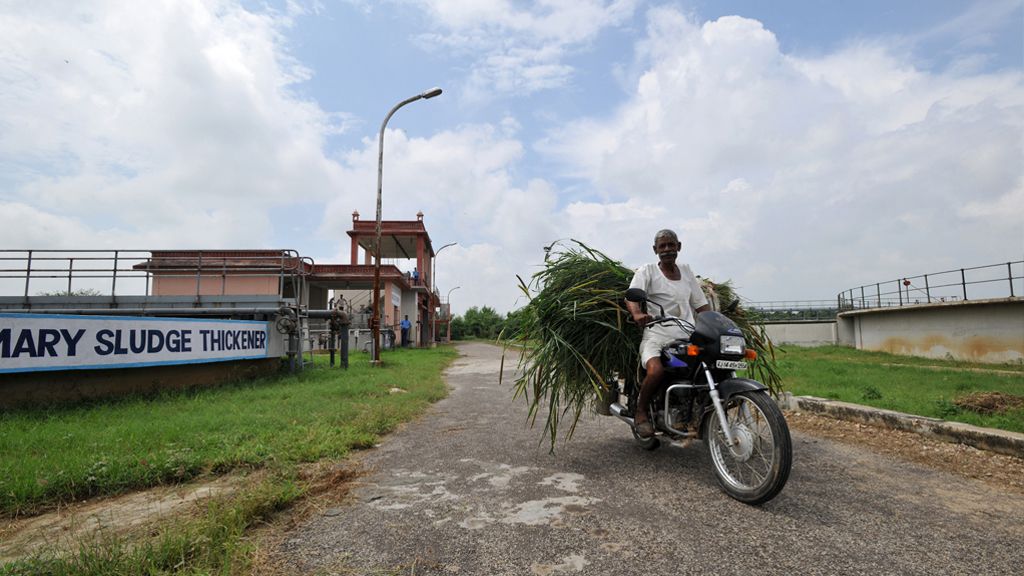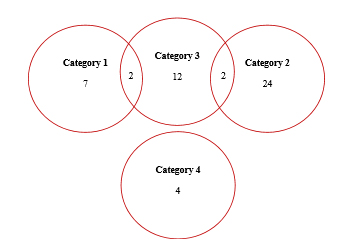
An examination of the published journal articles on development economics reveals a striking pattern—very few are devoted to the analysis of sanitation interventions and development. In a recent systematic review of all sanitation-related articles from the top-12 highest-ranking journals on development economics (Revilla et al. 2021), we attempt to understand the linkages between sanitation and development based on current qualitative and quantitative empirical work. We were able to collect a total of only 51 articles on sanitation published between 2000 and 2020. We categorized the articles into three major categories, namely those on (i) the impacts of sanitation, (ii) implementation strategies, and (iii) structural constraints on sanitation delivery. We added a fourth category to include those that are not classified elsewhere. Figure 1 shows the number of journal articles in each category.
Figure 1: Number of Journal Articles by Category

Source: Authors.
The evaluation of the three major categories reveals important findings and key policy messages. First, many of the articles demonstrate that sanitation has positive impacts on both individuals and households. For individuals, better sanitation services and behaviors are shown to affect various indicators of children’s health, such as height, cognitive scores, mid-upper-arm circumference, and weight z-scores (Augsburg and Rodríguez-Lesmes 2018; Spears 2020; Orgill-Meyer and Pattanayak 2020). Sanitation has also decreased cases of diarrhea and child malnutrition (Usman, Gerber, and von Braun 2019; Ramani, Fruhauf, and Dutta 2017; De Silva and Sumarto 2018). In terms of the positive impacts on households, families in India are each estimated to benefit by $727 annually from constructing toilets and latrines at home (Hutton et al. 2020). By reviewing these articles, we observe that most of the data are drawn from India, and only limited variables on sanitation are taken into account. Therefore, we believe that further and broader empirical research would enable practitioners and policy makers to design and implement more effective sanitation programs.
Second, implementation strategy is also the topic of many articles. Some of the articles discuss the pros and cons of the most popular strategy worldwide, community-led total sanitation (Alzúa, Djebbari, and Pickering 2020; McGranahan and Mitlin 2016; Engel and Susilo 2014; Bateman and Engel 2018; Joshi, Kooy, and van den Ouden 2016). Other strategies are also discussed, such as engineering interventions and subsidies (Muller 2020; Lipscomb and Schechter 2018). More interestingly, several articles identified two major hindrances to sanitation policy implementation: low accountability at the local level and inaccurate assessments caused by politics (Ban, Das Gupta and Rao 2010; Herrera 2019; Kotsila and Saravanan 2017). That is to say, the quality of sanitation programs deteriorates at the local level due to corruption or incompetence. However, for political reasons, these problems are not exposed in national-level assessments, which usually have an international audience. In order to tackle these two hindrances, we recommend more case studies to discover what contributes to good accountability in each specific context, as well as an action plan to build national-level databases that accurately reflect the administrative data collected from local governments.
The third category discusses five structural constraints that lead to heterogeneous outcomes, even when the same sanitation strategy is applied.
- The caste system
The caste system is a robust factor to the practice of open defecation and has made the Hindu community reluctant to change its behavior (Vyas and Spears 2018; Spears and Thorat 2019; O’Reilly, Dhanju, and Louis 2017).
- Religion
Related to the caste system, communities with different religious beliefs have different sanitation practices (Vyas and Spears 2018).
- Gender
Empirical evidence shows that same sanitation interventions generate greater improvements among females (Augsburg and Rodríguez-Lesmes 2018; Orgill-Meyer and Pattanayak 2020). This implies that women tend to rely more on or have higher demand for sanitation services.
- Poverty
Poor households’ capability to incorporate sanitation facilities is limited by their financial conditions, and they are therefore more in need of interventions (Gopalan and Rajan 2016; Cameron, Olivia, and Shah 2019).
- Rural–urban characteristics
The sanitation crisis in urban and rural areas differs in nature due to complexity for the former and remoteness for the latter (McFarlane 2019; O’Reilly, Dhanju, and Goel 2017). Therefore, different analytical frameworks and strategies are needed in urban and rural settings.
Given these five structural constraints, we recognize that building infrastructure alone is not enough to generate development. We suggest that governments should address such socioeconomic disparities through well-targeted welfare programs. We also emphasize that behavioral change campaigns that take these constraints into consideration should be incorporated and prioritized in sanitation policy design.
In hindsight, these articles reveal that we have a long way to go for sanitation. From a research perspective, issues on data integration and availability and support for further empirical work remain to be addressed. Governments, private agencies, and international organizations could provide different forms of funding to sanitation researchers and invest in a system that connects local-level and national-level databases. From a policy standpoint, local governments must institute programs that track and hinder corruption and increase competency among officials in the sanitation sector. To support such programs, governments should prioritize increasing their sanitation budget. In terms of improving household demand, we recommend expanding campaigns that lead to behavioral and mindset changes. While it may be a long shot to completely achieve the Sustainable Development Goal 6 sanitation target of ensuring clean water and sanitation for all, we believe substantial progress is possible if we ensure strong commitment and cooperation from all stakeholders in sanitation.
Read the related working paper here.
_____
References:
Alzúa, M. L., H. Djebbari, and A. J. Pickering. 2020. A Community-based Program Promotes Sanitation. Economic Development and Cultural Change, 68(2), 357–390.
Augsburg, B., and P. A. Rodríguez-Lesmes. 2018. Sanitation and Child Health in India. World Development, 107, 22–39.
Ban, R., M. Das Gupta, and V. Rao. 2010. The Political Economy of Village Sanitation in South India: Capture or Poor Information? Journal of Development Studies, 46(4), 685–700.
Bateman, M., and S. Engel. 2018. To Shame or Not to Shame—That Is the Sanitation Question. Development Policy Review, 36(2), 155–173.
Cameron, L., S. Olivia, and M. Shah. 2019. Scaling up Sanitation: Evidence from an RCT in Indonesia. Journal of Development Economics, 138, 1–16.
De Silva, I., and S. Sumarto. 2018. Child Malnutrition in Indonesia: Can Education, Sanitation and Healthcare Augment the Role of Income? Journal of International Development, 30(5), 837–864.
Engel, S., and A. Susilo. 2014. Shaming and Sanitation in Indonesia: A Return to Colonial Public Health Practices? Development and Change, 45(1), 157–178.
Gopalan, S., and R. S. Rajan. 2016. Has Foreign Aid Been Effective in the Water Supply and Sanitation Sector? Evidence from Panel Data. World Development, 85, 84–104.
Herrera, V. 2019. Reconciling Global Aspirations and Local Realities: Challenges Facing the Sustainable Development Goals for Water and Sanitation. World Development, 118, 106–117.
Hutton, G., S. Patil, A. Kumar, N. Osbert, and F. Odhiambo. 2020. Comparison of the Costs and Benefits of the Clean India Mission. World Development, 134, 105052.
Joshi, D., M. Kooy, and V. van den Ouden. 2016. Development for Children, or Children for Development? Examining Children’s Participation in School-Led Total Sanitation Programmes. Development and Change, 47(5), 1125–1145.
Kotsila, P., and V. S. Saravanan. 2017. Biopolitics Gone to Shit? State Narratives versus Everyday Realities of Water and Sanitation in the Mekong Delta. World Development, 93, 374–388.
Lipscomb, M., and L. Schechter. 2018. Subsidies versus Mental Accounting Nudges: Harnessing Mobile Payment Systems to Improve Sanitation. Journal of Development Economics, 135, 235–254.
McFarlane, C. 2019. The Urbanization of the Sanitation Crisis: Placing Waste in the City. Development and Change, 50(5), 1239–1262.
McGranahan, G., and D. Mitlin. 2016. Learning from Sustained Success: How Community-Driven Initiatives to Improve Urban Sanitation Can Meet the Challenges. World Development, 87, 307–317.
Muller, M. 2020. Have Five Decades of Development Engineering Research Improved Sanitation in Southern Africa? Journal of International Development, 32(1), 96–111.
O’Reilly, K., R. Dhanju, and A. Goel. 2017. Exploring “The Remote” and “The Rural”: Open Defecation and Latrine Use in Uttarakhand, India. World Development, 93, 193–205.
O’Reilly, K., R. Dhanju, and E. Louis. 2017. Subjected to Sanitation: Caste Relations and Sanitation Adoption in Rural Tamil Nadu. Journal of Development Studies, 53(11), 1915–1928.
Orgill-Meyer, J., and S. K. Pattanayak. 2020. Improved Sanitation Increases Long-term Cognitive Test Scores. World Development, 132, 104975.
Ramani, S. V., T. Frühauf, and A. Dutta. 2017. On Diarrhoea in Adolescents and School Toilets: Insights from an Indian Village School Study. Journal of Development Studies, 53(11), 1899–1914.
Revilla, M. L. D., F. Qu, K. E. Seetharam, and B. Rao. 2021. “Sanitation” in the Top Development Journals: A Review. ADBI Working Paper 1253. Tokyo: ADBI.
Spears, D. 2020. Exposure to Open Defecation Can Account for the Indian Enigma of Child Height. Journal of Development Economics, 146, 102277.
Spears, D., and A. Thorat. 2019. The Puzzle of Open Defecation in Rural India: Evidence from a Novel Measure of Caste Attitudes in a Nationally Representative Survey. Economic Development and Cultural Change, 67(4), 725–755.
Usman, M. A., N. Gerber, and J. von Braun. 2019. The Impact of Drinking Water Quality and Sanitation on Child Health: Evidence from Rural Ethiopia. Journal of Development Studies, 55(10), 2193–2211.
Vyas, S., and D. Spears. 2018. Sanitation and Religion in South Asia: What Accounts for Differences across Countries? Journal of Development Studies, 54(11), 2119–2135.
Photo: By Asian Development Bank. (“Rajasthan Urban Infrastructure Development Project in India“).









Comments are closed.